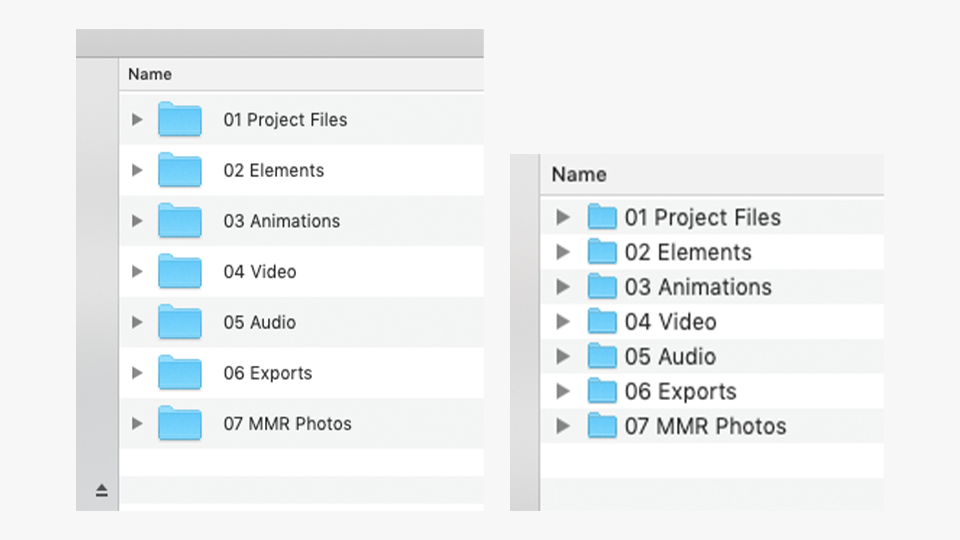MediaSource is an award-winning communications agency based in Columbus, Ohio. They specialize in video post production, public relations, social media, and strategic insights, making them experts at developing stories that grab and retain the attention of target audiences. For 20 years, MediaSource has been a trusted leader in communications for clients such as the Ohio State University Medical Center, Abbott, and UCLA Health.

In Q3 2019, MediaSource switched from Apple’s RAID system to an EVO 16 Bay shared storage server as part of their efforts to transition from Final Cut to a Premiere Pro-based process. With EVO, MediaSource was able to utilize ShareBrowser’s integrated panel within Premiere Pro, as well as available AI media tagging features and 10GbE transfer speeds around the office. “EVO worked really well with our system and internal workflow,” said Robert Leitch, Content Technology Manager at MediaSource. “It improved my team’s ability to collaborate on big creative projects.”
When a team member needed to move back to her home in Cleveland, Ohio, MediaSource designed a basic remote video editing workflow to help her stay connected. Adobe Premiere Pro’s offline files were transported using Dropbox, giving them a barebones way to edit important files. While this was a much-needed fix, MediaSource knew they couldn’t rely on such a system for more than one or two remote editors.

A Change in Plans
When the global COVID-19 pandemic brought their in-office post production to a halt, MediaSource—like many other companies in the media industry—needed to rapidly change their workflow to continue producing innovative content. With their entire team soon working from home, they purchased several portable hard drives so each team member could bring with them a selection of important files for editing and export.
The hard drive method worked well enough in the very short term, but would require editors to go back to the office on occasion to fetch media for new projects. Carrying drives by hand made back-and-forth transportation a constant risk. There was also little opportunity for collaboration, effectively isolating each editor’s project from the rest of the team. Leitch’s team needed a solution that could make the entire process more practical for the long-term.

Enter Nomad
Nomad—one of the many features now included with EVO—was created to answer the remote video editing workflow problems MediaSource and others in the industry would soon face. The release of Nomad gave media production teams an opportunity to adapt to their new situation without drastically changing their internal workflow. “It was clear that Nomad was designed for our specific situation, so we were quick to adopt it for our entire team,” said Leitch.
Instead of creating offline files and uploading them to a cloud storage system, EVO automatically creates proxies as it ingests media, saving time before the team transitions to a work-from-anywhere workflow. Nomad then retrieves the proxies or source files requested by the user and transports them to a designated location on a local drive, saving time for remote editors gathering media for a new project. The EVO+Nomad workflow enables production teams to spend more time creating and less time managing and waiting on file transfers.
One of the features MediaSource found particularly useful was Nomad’s ability to retrieve original folder structures as they exist on EVO. Leitch explains, “We’ve carefully designed our folder structure so each editor is able to quickly find the media they’re looking for.” With Nomad, the entire folder structure from a project is replicated onto each user’s remote workstation, keeping everything organized. Because every editor working on a project has an identical file structure, sharing edits and collaborating on major projects is seamless and easy.

The Future of Remote Editing
While the conditions that led MediaSource to adopt Nomad may not be around forever, a remote editing solution will be part of their workflow for many years to come. “Nomad isn’t just a quick fix. It really opens the door for efficiency and productivity,” said Leitch.
Their Cleveland-based editor and voice over artist has a much-improved workflow to stay connected with the team and access the files she needs for all her projects. They are also better positioned to work with freelancers, if desired, as they can allow freelance editors to connect to a specified folder structure on EVO, edit the media, then send the offline files back to them for review.
Leitch has his eyes on another powerful capability. “Nomad will allow our team to continue editing important projects while they’re in, say, Los Angeles shooting another project.” After media is located on their EVO back in Columbus, editors can continue working with proxies or source media from hotel rooms, sets, or anywhere else.
“Nomad isn’t just a quick fix. It really opens the door for efficiency and productivity”
Nomad enables production companies like MediaSource to keep remote video editors connected to their EVO shared storage server from anywhere in the world, giving creatives a competitive advantage in a changing media environment.
Want to learn how your team can use Nomad to collaborate more effectively from any remote workstation? Get a demo today.
